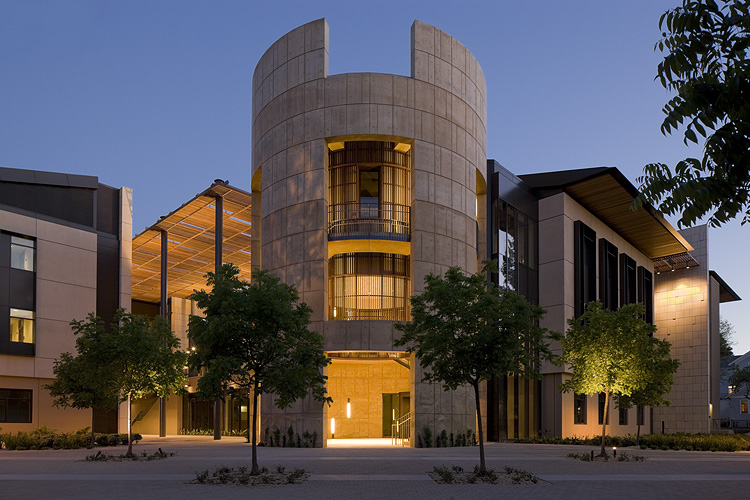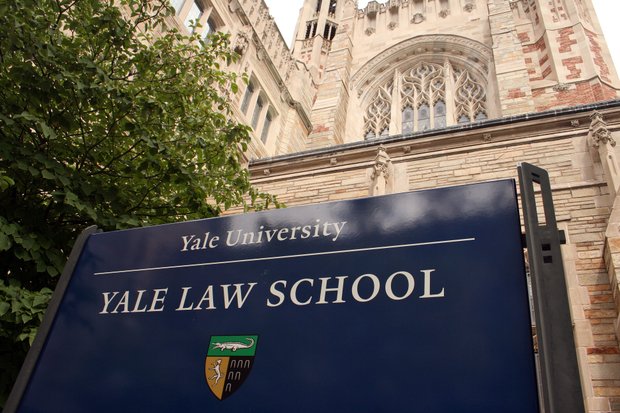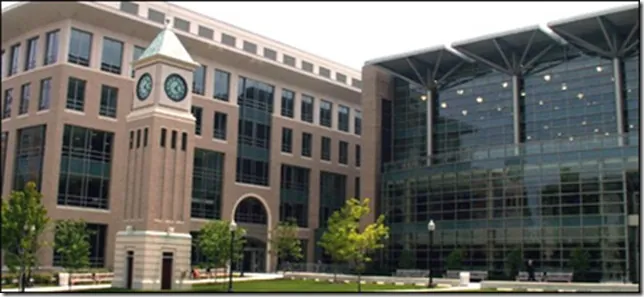
Stanford Law School
The 2024-2025 U.S. News Law School Ranking has everything…
Everything you hate about rankings, that is.
Where do you start? Picture a methodology that’s calibrated to a predetermined outcome – the academic equivalent to a WrestleMania card where the same schools end up in their all-too-familiar spots. Not only is the ranking stale, but it is inconclusive – riddled with ties, including one for the #1 spot.
Yes, Yale Law and Stanford Law again tied at the top spot. Surprise, right? After all, this is the 35th straight year that Yale Law has either held or shared the top spot in the U.S. News ranking. For Stanford Law, this is the second straight year of sharing top honors with Yale Law…after being the runner-up for seemingly an eternity. Chicago Law rounded out the Top 3 for the third year in a row. In a bit of a shake-up, four schools shared the #4 spot: the University of Pennsylvania, Harvard Law, Duke University, and the University of Pennsylvania.
THE METHODOLOGY
Last year, U.S. News gave their ranking methodology a proverbial facelift. Notably, it boosted the weight of placement success by 32 points, while diluting the importance of survey responses and input measures by 15 and 11 points respectively. In addition, U.S. News scaled back the value of school resources by 6 points.
As a whole, Placement Success accounts for a decisive 58% of the ranking weight. This includes job placement within 10 months of graduation, which makes up 33% of the rankings total weight. Basically, this metric covers employment in jobs that U.S. News defines as “long-term, full-time, and requiring (or taking advantage of) bar passage.” Another 18% of the weight covers bar passage rate for first-time test-takers, which includes graduates from the 2021 and 2022 classes. The remaining 7% weight under Placement Success encompasses the ultimate bar passage rate for 2019 and 2020 graduates.
The Quality Assessment involves surveys completed by two distinct pools. The “Peer Assessment” is completed by “law school deans, deans of academic affairs, chairs of faculty appointments and the most recently tenured faculty members.” Using a scale that ranges from 1 (Marginal) to 5 (Outstanding), this survey evaluates a law school’s overall quality. That same scale is used to measure school quality by legal professionals – “including hiring partners of law firms, practicing attorneys and judges” – in the “lawyers and judges assessment score.” Each survey carries a 12.5% weight.
Finally, U.S. News applies lower weights to a series of metrics. Selectivity holds a 10% weight and includes inputs like median LSAT and GRE (5%), undergraduate GPA (4%), and acceptance rate (1%). The remaining 7% weight falls under Faculty and Library Resources, which is broken out into faculty-student ratio (5%) and library resources (2%).

Yale Law
YALE VS. STANFORD
These weights play a pivotal role when it comes to why Yale Law and Stanford Law again tied for 1st place. In terms of outcomes, the schools’ performance is nearly identical. That said, Yale SOM edged out their Palo Alto peers in each Placement Success measure: 10-month bar passage (99.4% vs. 95.2%), ultimate bar passage rate (95.8% vs. 94.4%), and first-time bar passage rate (95.8% vs. 94.4%). That gives Yale Law an edge – albeit small – across measures making up 58% of the ranking weight.
Still, Stanford Law enjoyed a more decisive advantage in surveys. Peer schools scored Stanford Law higher than their New Haven rivals by a 4.6-to-4.5 margin. Among legal professionals, Stanford Law scored a 4.7 against Yale Law’s 4.5. Beyond that, the numbers favored Yale Law. They outpace Stanford Law in a variety of measures including LSAT (175 vs. 173), undergraduate GPA (3.96 vs. 3.95), lower acceptance rate (5.58% vs. 7.26%), and student-to-library-staff-ratio (31.7-to-1 vs. 3.59-to-1). The student-to-faculty ratio was deadlocked at 4.4-to-1).
Individually, Yale Law boosted its 10-month bar passage rate from 96.8% to 99.4%, while its ultimate bar passage rate shrunk from 99% to 95.8% over the past year. The school’s peer score rose from 4.4 to 4.5 during this same period, though its average score among legal professional dipped from 4.6 to 4.5. In contrast, Stanford Law’s peer assessment score lost .1 of a point, while its legal professional average improved by .1 of a point. That said, Stanford Law has invested more heavily in library staff, with that ratio decreasing from 41.2-to-1 to 3.59-to-1. All the same, both Stanford Law and Yale Law each lost over 2 points in first-time bar passage over the previous year.
WINNERS AND LOSERS
Last year, Duke Law was the big winner in the U.S. News Law School Ranking, as it moved from 11th to 5th. This year, Duke inched up another spot to 4th. However, the most noticeable uptick came from the University of Virginia, which climbed from 8th to 4th thanks to a 99.10% placement rate within 10 months of graduation (a 1.6% improvement) and a 4.5 average in the legal professional survey. Washington University of St. Louis moved up four spots to 16th courtesy of across-the-board improvements in outcomes, while Notre Dame jumped 7 spots to 20th – a surge driven by a 5-point jump in placement within 10 months of graduation (and a .2 of a point improvement in peer assessment). Washington & Lee and the University of Illinois each gained 7 spots to move to 40th and 43rd, respectively. By the same token, the University of Colorado and the University of Florida both moved up 8 spots to enter the Top 50.
The news wasn’t as positive for NYU and USC, which lost 4 spots each to end up at 9th and 20th respectively. Two law schools – Emory Law and UC Irvine – fell 7 spots. And there were four programs that lost 6 spots: Brigham Young University, University of Florida, George Washington University and the University of Kansas.
QUESTIONABLE PRACTICES
Maybe the biggest criticism of the U.S. News Law School Ranking involves the prevalence of ties. Aside from Stanford Law and Yale Law, you’ll find another 5 ties in the Top 25. In other words, 18 of the Top 25 law schools were involved in some tie, including the aforementioned four-school logjam at 4th. And there are three schools tied at 9th too: New York University, University of Michigan, and Northwestern University. Get out of the Top 20 and there are 5-school bottlenecks at both #22 and #35 – a further sign that U.S. News needs to continue tinkering with its methodology to differentiate schools.
U.S. News’ surveys are equally problematic. In the peer survey, completed by rival academics, you have to wonder just how much these respondents know about the day-to-day operations. How often are they on campus? What have they personally witnessed on the caliber of their curriculum and students? In other words, what types of due diligence have these respondents pursued as opposed to falling in line with third-party branding tropes? When it comes to legal professionals being surveyed, the same gaps are involved, Notably, how many and what types of experiences with school graduates enabled legal professionals to formulate their scores?

Georgetown Law Center
PART-TIME LAW SCHOOL RANKING
U.S. News also publishes an annual Part-Time law school ranking, whose methodology leans more heavily towards sentiment over hard data. 70% of the weight is given to a Peer Assessment given to the “deans and three faculty members” at each ranked part-time program. The remaining 30% is split between LSAT scores (20%) and undergraduate GPAs (10%) of part-time candidates who entered law school in 2023.
True to form, the Georgetown Law Center again ranked as the top part-time law program in 2024-2025. In a surprise, Fordham University displaced George Washington University as the #2 part-time program in the United States. The latter fell to #3, with the top 5 rounded out by Temple University and George Mason University.
SPECIALTY RANKING
U.S. News also produces an annual “Specialty Ranking,” which assesses schools’ excellence in areas ranging from Clinical Training to Trial Advocacy. These peer assessments were supplied by law school faculty who teach in their particular disciplines. Using U.S. News’ five-point scale, survey respondents ranked their top programs highest-to-lowest. Among the 13 specialties, 10 listed 190 or more law school, with the lowest total coming from Dispute Resolution with 92 law schools.
Here are this year’s top performers:
Business / Corporate Law: Stanford University
Clinical Training: Georgetown Law Center
Constitutional Law: Harvard Law
Contracts and Commercial Law: Columbia University
Criminal Law: New York University
Dispute Resolution: Ohio State University
Environmental Law: Pace University
Healthcare Law: Georgia State University
Intellectual Property: U.C. Berkeley
International Law: New York University
Legal Writing: University of Oregon
Tax Law: New York University
Trial Advocacy: Stetson University, Temple University
Go to the next page for a historical U.S. News Law School Ranking.
